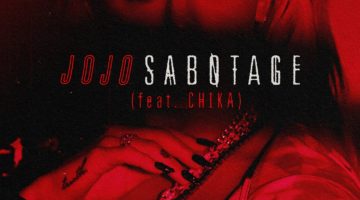
Duality— it’s the main reason that Tupac Shakur, better known by the monikers 2Pac/Makaveli, remains one of the most influential and admired rappers—and musical artists in general—20 plus years after his tragic death.
Pac was often criticized during his lifetime—along with other progenitors of the gangsta rap subgenre—for allegedly promoting and glorifying life on the streets and gang violence. Anyone who has taken the time to listen to his lyrics knows this is not the case and that’s where his defining trait of duality comes into play.
2Pac’s songs, without a doubt, highlighted and explored the hardships and violence often experienced in America’s inner cities. But his purpose was always to critique the systems which create these issues, which keep black Americans disproportionately disadvantaged and which feed the cycles of violence and pain born from such desperate circumstances. His music dealt with street life because it was his life experience. It was about honesty and capturing the feeling of these circumstances, which more often than not included the tragic outcomes of these scenarios—look to one Pac’s most famous tracks, “Brenda’s Got a Baby,” for proof.
But it just as often featured heartfelt reflections on his childhood and relationships as well as calls to action for America to confront the very issues many critics accused him of glamorizing. Pac’s early upbringing among Black Panthers and other activists undoubtedly contributed to his messages of black activism and pride, socioeconomic equality and vehemently combating injustice and prejudice.
No album makes this dichotomy more obvious than “Still I Rise,” one of many posthumous releases, which debuted in December 1999. The album is a collaboration with Outlawz, a group created by 2Pac following his release from prison a year before his death, who had collaborated with him on solo releases such as “Hit Em Up.”
The title seems to hold a double meaning. The first seems obvious—as its very existence serves to immortalize 2Pac and ensures his music will continue to reach generations even after he is long gone. The title also clues listeners into the album’s content, which addresses the inequalities the black community continues to face while advocating for unity and resilience to triumph over them. Furthermore, the record seems almost designed to encapsulate 2Pac’s musical persona—the thug with a heart of gold.
Tracks like “Homeboyz” feature a lot of the macho posturing that became a staple of the genre, but even tracks with the most violent lyrical content pack in a sense of tragedy, such as “Hell 4 a Hustler,” one of the album’s highlights. “Hell 4” features a haunting, melodic hook by the entire group with J. Valentine where they beg for God’s mercy for the crimes they claim to commit to throughout the track. The verses on the track feature each member doing their best DMX growl while they recount their brutality in the streets and domination of the music industry—undercut by their understanding that both lives are a soul-crushing grind and their reflections on the losses they have resulted through years of hardship.
2Pac’s opening verse also hints at the sense of aimlessness and hopelessness many young black men living in poverty experience—seeing gang life and drug-dealing as the only way to make money and escape the misery, even if just for a while as he raps, “From adolescence, to my early teens, thought we were gonna die/Sellin’ dope to all the fiends, at times I wanna cry…” E.D.I. Mean echoes the sentiment in his part during the second verse: “Gotta get that paper quickly and escape the sickness/If I fail, then I suffer, bein’ broke is hell 4 a hustler.”
One of the most powerful tracks on the album is the single “Baby Don’t Cry (Keep Ya Head Up II),” a follow-up to 2Pac’s successful “Keep Ya Head Up.” Just like its predecessor, “Baby Don’t Cry” focuses on the struggles unique to black women, which in addition to Pac, E.D.I. Mean and Young Noble, features H.E.A.T., a Swedish rock group—showing Pac’s eclectic influences and musical taste.
The track features a subdued bass line along with mellow and repetitive percussion, allowing for the lyrics to really stand on their own and resonate—not getting lost in an overproduced track. The R&B-esque chorus features some of the best vocals in the record, by an uncredited singer. “Baby Don’t Cry” is exemplary of the compassionate spirit Pac often went unrecognized for in his lifetime and features some of his most striking lyrics—advocating for strength in the face of seemingly insurmountable adversity and apathy as he raps, “Even though it wasn’t me/I could feel the grief, thinkin’ with your brain’s blown/That would make the pain go, no/You gotta find a way to survive ‘cause they win when your soul dies.”
This leads to one of the album’s most persistent targets—the systemic prejudice and racism which festers within U.S. governmental institutions. The opening track, “Letter to the President,” is not so much an open letter to former President Bill Clinton, but politicians in general. This is represented through a hypothetical president character and their campaign promises to address systemic injustice and lack of infrastructure in black communities—only to leave these communities behind once they get the votes.
“The Good Die Young” addresses the larger issues plaguing the US such as AIDS, abortion rights, the disproportionate policing of black communities and the hypocrisy of politicians who blame poor, disproportionately black communities for the conditions that politicians have the power to change—and often create through their callous indifference. But there is a ray of hope, as the song implores listeners to use hardships as a catalyst to embrace one another as equals, to honor those who have gone before us and to work towards a brighter future so that the next generation will not suffer the same injustices that previous ones have. The fact that many of the issues addressed in the song have not dissipated can seem dejecting and bleak, but this fact only boosts the message’s relevancy and urgency.
“Still I Rise” may be the album that best explores Pac’s multi-layered approach to addressing issues not only within the black community, but the larger systems which continually reproduce them. He never abandons the gangsta rap aesthetic and plenty of tracks offer up the braggadocious flexing and vicious call-outs the genre is known for.
However, no track goes without Pac’s empathy and social critique shining through, and often the album experiments with blending in other styles. “Killuminati” opens with a riff akin to a 70’s funk rock track and “Teardrops and Closed Caskets” opens with a drum beat straight out of classic rock before incorporating elements of pop music in Nate Dogg and Val Young’s choruses.
Pac’s legacy is no better captured than in this stylistically diverse and boldly outspoken and nuanced album, which seems almost prophetic in its ability to tackle obstacles and crises that remain ingrained in American institutions. It ensures that while the man has gone, his rebellious spirit never will.
Matt Cotter can be reached at ryleejackson@sagebrush.unr.edu, or on Twitter @NevadaSagebrush.












